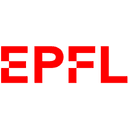Explore the physics and technology behind advanced X-ray sources for cutting-edge scientific research.
Explore the physics and technology behind advanced X-ray sources for cutting-edge scientific research.
Dive into the fascinating world of synchrotrons and X-ray Free Electron Lasers (XFELs) with this comprehensive course. Learn how these powerful scientific tools enable unprecedented investigations in fields ranging from molecular biology to materials science. This course, the first of two parts, covers the fundamental principles of X-ray generation, interaction with matter, and the intricate physics of synchrotron and XFEL facilities. Gain valuable insights into the machines that produce intense X-ray sources and the beamlines that harness them for scientific discovery. Ideal for researchers, engineers, and students interested in advanced scientific instrumentation and its applications.
8,877 already enrolled
Instructors:
English
English
What you'll learn
Understand the fundamental properties of X-rays and their generation mechanisms
Explain the interactions between X-rays and matter in various experimental contexts
Describe the basic principles of synchrotron and XFEL machine physics
Understand the design and function of X-ray optics and beamlines
Explain how synchrotrons and XFELs enable advanced research in diverse scientific fields
Identify the key components and instrumentation used in synchrotron and XFEL facilities
Skills you'll gain
This course includes:
PreRecorded video
Graded assignments, exams
Access on Mobile, Tablet, Desktop
Limited Access access
Shareable certificate
Closed caption
Get a Completion Certificate
Share your certificate with prospective employers and your professional network on LinkedIn.
Created by
Provided by

Top companies offer this course to their employees
Top companies provide this course to enhance their employees' skills, ensuring they excel in handling complex projects and drive organizational success.





There are 6 modules in this course
This course provides a comprehensive introduction to synchrotrons and X-ray Free Electron Lasers (XFELs), focusing on the fundamental principles and technologies behind these advanced scientific instruments. Students will learn about the generation and properties of X-rays, their interactions with matter, and the complex physics of synchrotron and XFEL facilities. The curriculum covers machine physics, beamline design, and instrumentation, providing a solid foundation for understanding how these facilities enable cutting-edge research across various scientific disciplines. Topics include the basics of X-ray production, synchrotron physics, X-ray optics, and beamline configurations. By the end of the course, participants will have a strong grasp of the underlying principles that make synchrotrons and XFELs powerful tools for investigating materials and their properties with unparalleled accuracy.
General intro of x-rays, synchrotrons, and XFELs
Module 1
Interactions of x-rays with matter
Module 2
Basics of synchrotron ("machine") physics
Module 3
Basics of synchrotron ("machine") physics, continued
Module 4
X-ray optics and beamlines
Module 5
X-ray optics and beamlines, continued
Module 6
Fee Structure
Instructor

2 Courses
Pioneer in Synchrotron Physics and X-ray Science
Philip Willmott is a distinguished physicist serving as Scientific Coordinator and Project Leader for Photonics at the Swiss Light Source (SLS 2.0) upgrade project, while holding positions as Titular Professor in Physics at Zurich University and Lecturer at EPFL. With over 25 years of experience in experimental physics and materials science, he has made significant contributions to synchrotron radiation research and applications. His expertise spans diffraction, thin-film heterostructures, synchrotron physics, and materials science. He authored the definitive textbook "Introduction to Synchrotron Radiation – Techniques and Applications," now in its second edition, which has become a cornerstone reference in the field. Currently, he plays a crucial role in the comprehensive upgrade of the Swiss Light Source (SLS 2.0), which aims to increase the facility's X-ray beam brilliance by a factor of forty, enabling breakthrough research in areas such as imaging, X-ray spectroscopies, and macromolecular crystallography
Testimonials
Testimonials and success stories are a testament to the quality of this program and its impact on your career and learning journey. Be the first to help others make an informed decision by sharing your review of the course.
Frequently asked questions
Below are some of the most commonly asked questions about this course. We aim to provide clear and concise answers to help you better understand the course content, structure, and any other relevant information. If you have any additional questions or if your question is not listed here, please don't hesitate to reach out to our support team for further assistance.


